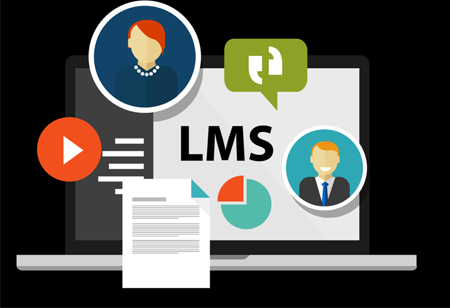THANK YOU FOR SUBSCRIBING
Be first to read the latest tech news, Industry Leader's Insights, and CIO interviews of medium and large enterprises exclusively from Education Technology Insights
What are the Deployment Options for Learning Management Systems?
Learning management systems have evolved over the years and have now become an important aspect of all edtech companies.

By
Education Technology Insights | Tuesday, December 01, 2020
Stay ahead of the industry with exclusive feature stories on the top companies, expert insights and the latest news delivered straight to your inbox. Subscribe today.
Learning management systems have evolved over the years and have now become an important aspect of all edtech companies.
Fremont, CA: A learning management system (LMS) is a platform based on software or SaaS that facilitates the management, delivery, and measurement of the corporate e-learning programs of an organization. In short, it helps you deliver training materials to different audiences, from online courses to real-time instruction sessions. Moreover, most systems can even be accessed on smartphones these days.
The LMS depends on the goals of the organization, online training strategy, and desired results. The most prevalent use of LMS software, however, is to deploy and track online training initiatives. Assets are typically uploaded to the LMS, making them readily accessible to remote learners.Here's a list of deployment options for LMS.
Desktop app: The LMS app is installed and available for access on desktops. With the advancement in technology these days, some desktop apps are accessible on several devices, making it easy for your entire eLearning team to collaborate.
Check Out: Top Education Technology Solution Companies
Mobile app: Here, LMS is accessible on mobile devices anytime, anywhere. Online learners can track online training initiatives on the go as the training content is accessible whenever.
Self-hosted: This is when LMS requires downloads of software. The supplier of LMS may offer direct downloads from their website, or users must request physical discs of the software. Today, it has become beneficial to incorporate direct downloads into this type of LMS. The platforms that are self-hosted enable greater creative control and customization. The drawback here is that users usually have to pay for updates and may require a higher IT know-how of the system.
Cloud-based platform: These LMS platforms are cloud-hosted. The LMS supplier maintains the system and carries out any upgrades or updates to the technology. With a username and password, online learners and collaborators login to the LMS. For organizations that want to get started as soon as possible, there is no need to install any software, which makes it a great option. The downside is that it is not possible to customize some cloud-based LMS.







